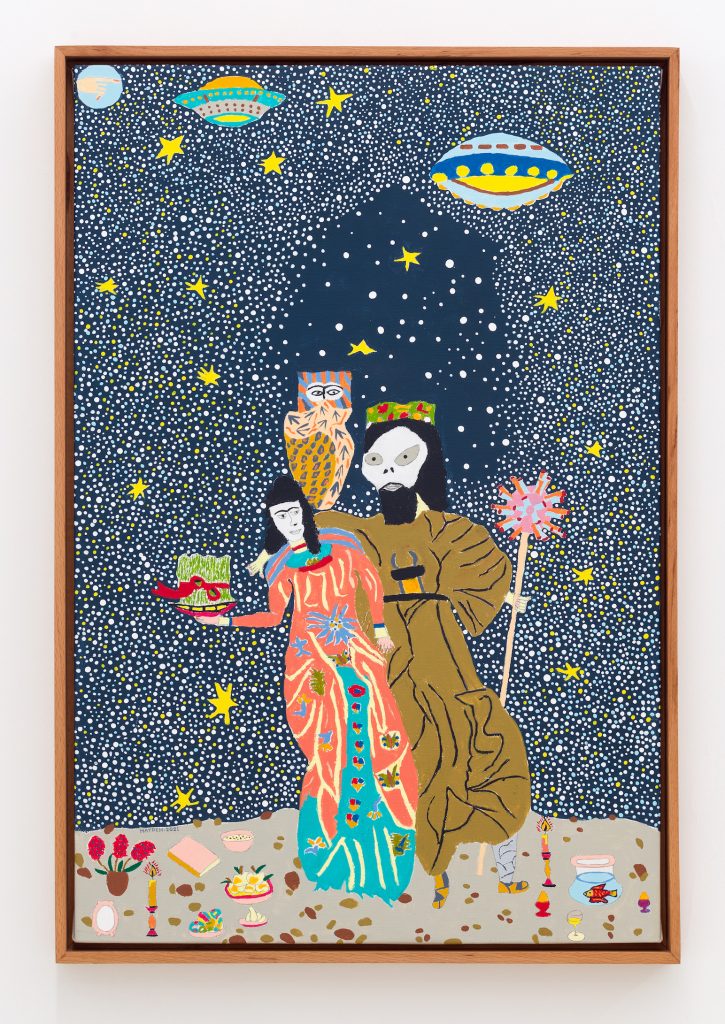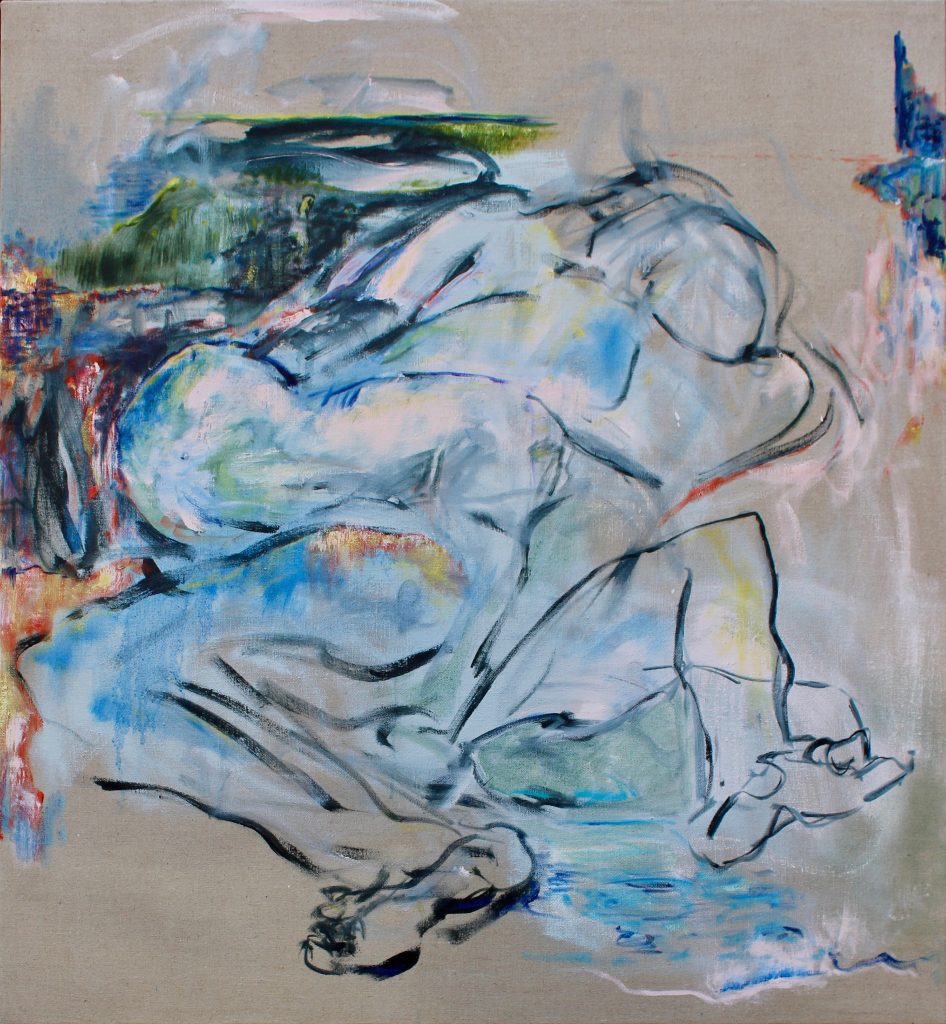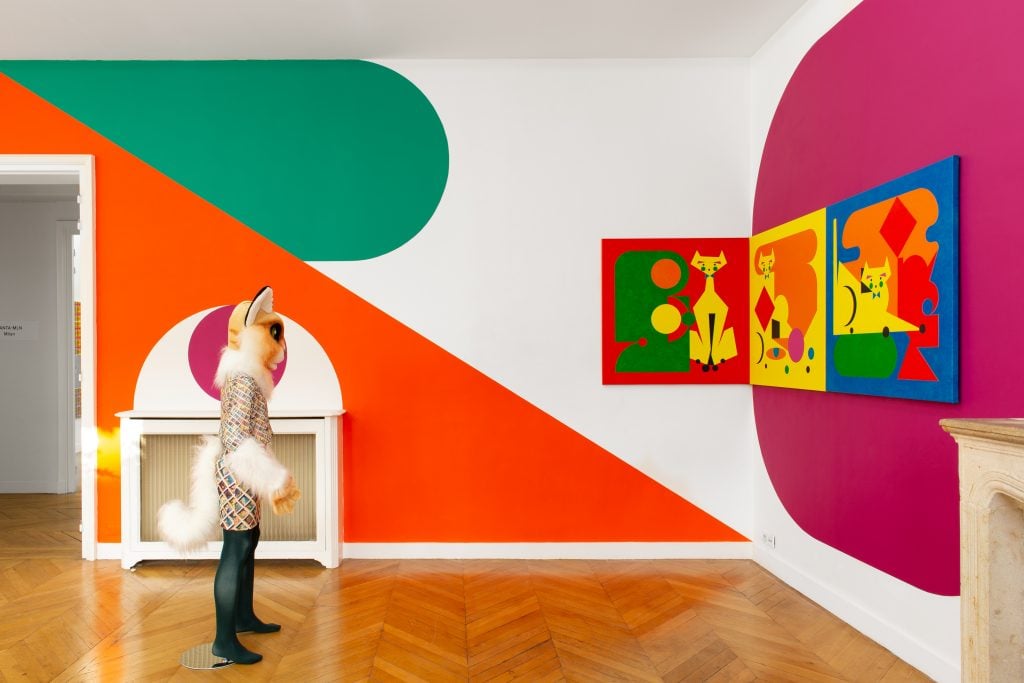Art Fairs
Paris Internationale, a Fair by and for Gallerists, Offers an Appealingly Focused Alternative to FIAC. But Will Sales Follow?
The emphasis is squarely on creators with solo or duo-artist presentations.

The emphasis is squarely on creators with solo or duo-artist presentations.

Anna Sansom

On a leafy avenue in the upmarket 16th arrondissement in western Paris, the seventh edition of Paris Internationale opened yesterday in an elegant, Haussmann-style building where exhibitors are presenting duo and solo shows in a convivial atmosphere.
While the number of American galleries is down, numerous emerging dealers from other regions have prioritized this FIAC-concurrent gathering, despite issues with travel and vaccination.
Out of the 36 galleries hailing from 21 countries, 20 are first-time participants. “This year, New York galleries haven’t participated because of the uncertainty of Covid, but we’ve always had around 40 galleries here,” Axel Dibie, co-owner of Crèvecoeur, one of the fair’s founding galleries and a committee member, told Artnet News.
Haydeh Ayazi, New Year Owl (2021). Courtesy of Delgosha, Tehran.
There are two defining aspects of Paris Internationale, running October 20-24. The first is that it is by invite-only, tapping galleries identified by committee rather than accepting open applications. The second is that it usually changes location. Apart from one year when it rented the former parking structure of the Libération newspaper, the venue has tended to be a turn-of-the-century building.
Putting the emphasis squarely on creators, a requirement this year was that the galleries present works by just one or two artists. “The galleries responded very positively to this as it imposed a ‘salon’ atmosphere and made the fair more coherent,” said Dibie, who sold two brightly colored, abstract-figurative paintings of kittens, by Ad Minoliti, each priced at €25,000 ($30,000), and four sculptures by Naoki Sutter-Shudo, priced at €6,000 ($7,000) apiece, during the preview. There is a lot of buzz around Argentine artist Ad Minolti, who currently has exhibitions at the Centre de Création Contemporaine Olivier Debré in Tours, France, and the Baltic Centre for Contemporary Art in Gateshead, Britain.
Elaborating on the philosophy of Paris Internationale, fair director Silvia Ammon said: “The idea of community has always been key to our project. We invite galleries that we admire and we give them carte blanche to present the artists they want.”
“I love that the fair is always in a domestic environment so you get to see work in a nicer setting than a tent,” enthused Kendall Koppe, a stalwart participant from Glasgow who is presenting a duo show on Hamish Chapman and Josh Faught.

Helen Teede, Mothers in Others (2021). Courtesy of First Floor Gallery, Harare.
That early sales have not reached pre-pandemic levels has not discouraged galleries that remain committed to gaining exposure for their artists. “It’s still a tough year, we can’t expect it to be like 2019,” said Alejandra Monteverde, director of first-time exhibitor Crisis, of Lima, who brought over Sarah Zapata’s textile works and Raul Silva’s paintings. “We know this isn’t a commercially interesting fair, but it is about symbolic value and positioning,” she added. To this end, Monteverde was pleased to have Hans Ulrich Obrist stop by the stand during the preview.
Testifying to the fair’s appeal as a parallel event to FIAC, several galleries overcame vaccination restrictions to travel to France. “The fair had to write a letter, stating an ‘imperative motive’, so that my administrative director could come as she’d had the [Russian] Sputnik vaccine that is not recognized by the E.U.,” Ekatherina Iragui, owner of Moscow’s Iragui, said. Iragui is presenting paintings, drawings, and illustrations by Pavel Pepperstein, who represented Russia at the Venice Biennale in 2009. ne of his paintings is included in the exhibition ‘Napoléon? Encore!’ at the Musée de l’Armée in Paris. “I prefer satellite fairs, because you feel more of a personal attitude than at big fairs that don’t have enough time to promote you,” she added.

Pavel Pepperstein, Jeanne d’Arc attaque (2017). Courtesy of the artist and Iragui, Moscow.
The fact that France does not recognize Sinovac, the Chinese-made vaccine, has also caused problems for exhibitors. “I’ve come over here on my own; the rest of my team was unable to come as they’ve had Sinovac,” said Lisa Offerman, co-owner of LC Queisser (Tbilisi), which is presenting Melike Kara’s paintings inspired by Kurdish tapestries and a film by Sophio Medoidze about the transition of a mountainous region in Georgia rooted in pagan traditions.
Valerie Kabov, owner of First Floor Gallery in Harare, could not fly over from Zimbabwe because of the Sinovac restriction, so she hired Paris-based photography gallerist Liza Fetissova to manage her stand. The gallery has sold several dreamy, semi-figurative paintings in the range of €2,400 to €5,900 ($2,800–$6,000), by Helen Teede, a Zimbabwean artist who completed an MA in visual art last year in Venice.
First-time exhibitor Delgosha (Tehran) faced uncertainties of a different kind before being able to attend. “Until three months ago, we couldn’t travel to Europe from Tehran because of visa restrictions,” gallery director Shabahang Tayyari said. He sold “70 percent” of its solo presentation of Haydeh Ayazi’s brightly colored paintings revisiting Persian myths and calligraphy in the €2,500 range ($3,000). He praised the format: “We like the concept of the fair being in a different venue each year because it gives a new angle.”

An installation by Ad Minoliti at Paris International. Photo © Margot Montigny, Courtesy of the artist and Crèvecoeur, Paris.
Other galleries that reported strong early sales are Lefebvre & Fils of Paris, presenting humorous ceramics by Molly McDonald, and Rhizome, from Algiers, displaying paintings about the absurdity of human existence by Lounis Baouche.
Still, it is Paris Internationale’s identity as a fair organized by galleries that exhibitors seem to appreciate. Julia Gardener, co-founder of first-time participant Hot Wheels, of Athens, who is showing figurative sculpture by Marina Xenofontos, opined: “The artistic freedom of the fair enables galleries to introduce forms and media that visitors might not know already.”
Fellow first-timer Sophie Tappeiner, based in Vienna, observed, “Everybody joins forces here.” This is the third fair, after Liste in Basel and Frieze in London, in which she has exhibited this fall, this time with works by Anna Schachinger and Liesl Raff. “It’s exhausting, but it’s nice that things are happening again,” she remarked.
Paris Internationale runs through Sunday, October 24, 2021, at 186 Avenue Victor Hugo, 75016 Paris.